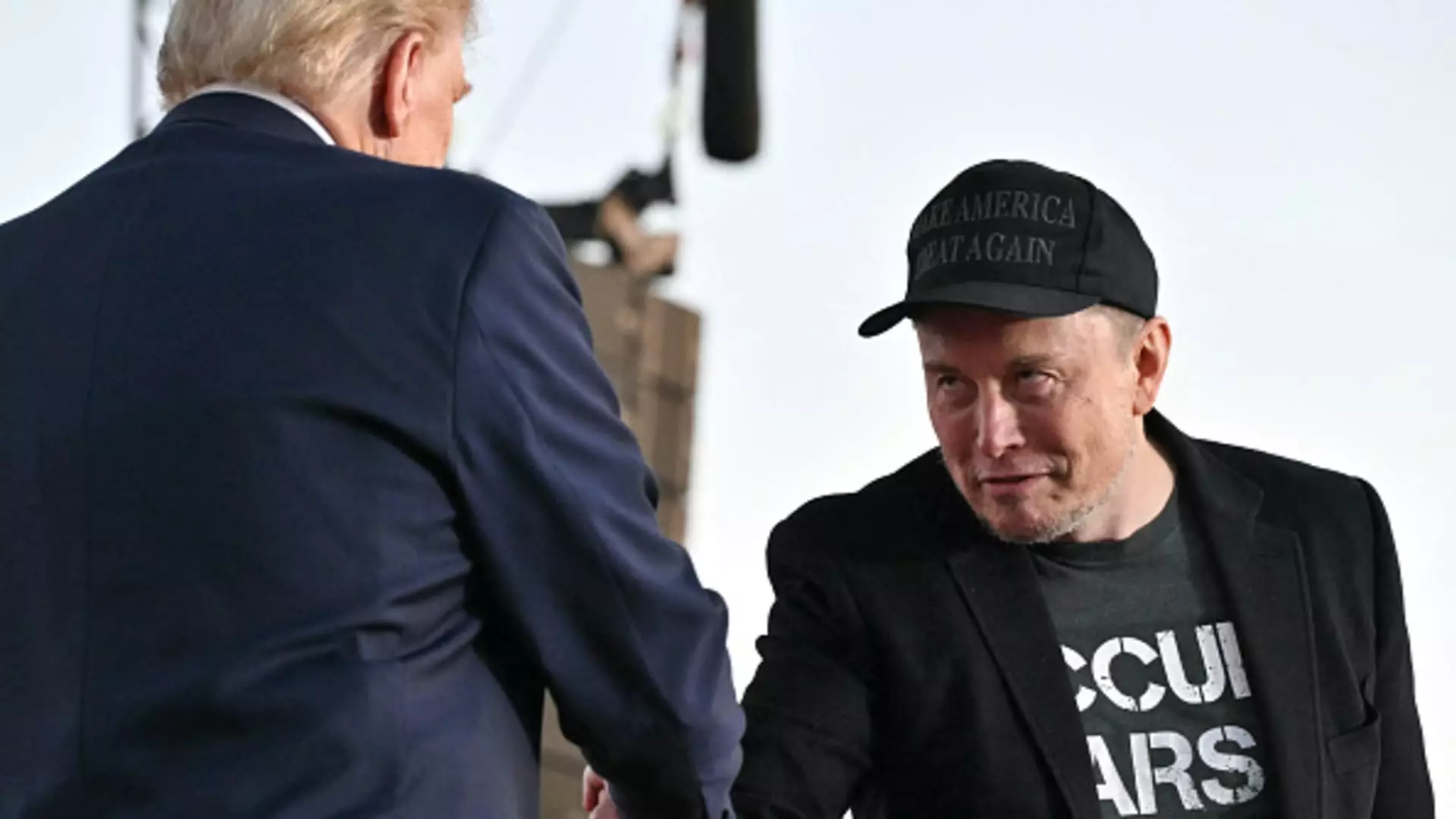The landscape of autonomous vehicle technology is rapidly evolving, and the recent surge in Tesla’s stock price suggests that the company is at the forefront of this revolution. Following news that President-elect Donald Trump’s transition team is prioritizing the establishment of a federal framework to regulate self-driving vehicles, investors have shown renewed enthusiasm for Tesla. This reflects not only the technological advancements within Tesla but also the potential political advantages that may arise as a result of this upcoming regulatory shift.
The announcement from Trump’s team, as highlighted in various reports, signals a decisive movement towards the acceptance and integration of autonomous technologies into everyday life. Tesla’s CEO, Elon Musk, who has actively supported Trump during his campaigns, stands to gain significantly from this relationship. The implications are profound: a collaborative approach between a major automotive manufacturer and a pro-business administration could accelerate the adoption of self-driving technology.
Moreover, these regulatory frameworks are not simply arbitrary; they are essential for addressing safety concerns while fostering innovation. By establishing clear guidelines, the Trump administration could enhance consumer confidence, thereby paving the way for broader acceptance and implementation of autonomous vehicles.
Tesla is actively pushing the envelope in self-driving technology, aiming to deploy fully autonomous vehicles, or “robotaxis,” by 2024. The concept of a Cybercab—a two-seater vehicle without steering wheels or pedals—demonstrates Tesla’s innovative vision. However, the company faces intense competition, notably from Waymo, which has already successfully deployed self-driving technologies in public settings.
Musk’s ambition is not just to manufacture electric vehicles; it extends to transforming transportation norms by introducing a fleet of autonomous ridesharing vehicles. This vision, if realized, could revolutionize urban mobility, minimize traffic congestion, and substantially impact car ownership models.
Despite Tesla’s assertions regarding its Full Self-Driving (FSD) technology, substantial challenges remain. The current FSD system requires human oversight, with drivers expected to be ready to intervene at a moment’s notice. While this level of supervision might suffice for now, true autonomy—the kind that requires no human intervention—is the ultimate goal. Musk has projected optimistic timelines for rolling out unsupervised FSD capabilities, particularly in states like Texas and California, but such forecasts should be tempered with caution.
The complexities associated with achieving a fully autonomous system stem from both technological and regulatory barriers. A framework established by the Transportation Department, as suggested by the Trump transition team, could provide the policy support necessary for realizing Musk’s grand vision.
To bring about effective regulatory changes, the Trump administration aims to assemble a team with considerable expertise in transportation and technology. Reports indicate that potential candidates—including former Uber executive Emil Michael and elected officials like Representatives Sam Graves and Garret Graves—are being considered for leading roles within the Transportation Department.
The selection of individuals with a deep understanding of both autonomous driving technology and regulatory processes will be critical. Effective leadership can help bridge the gap between innovation and safety, ensuring that regulations both promote technological advancements and protect public interests.
As Tesla navigates an uncertain yet promising terrain in autonomous vehicle technology, the interplay between governmental regulations and corporate aspirations will be pivotal. The relationship between the Trump administration and Musk suggests a potential alignment that could radically enhance the pace of innovation in the self-driving sector. However, achieving Musk’s vision will require more than just political goodwill—it necessitates the diligence and expertise of a capable regulatory framework. As we move into an era increasingly defined by autonomous technologies, the trajectory of companies like Tesla will be contingent upon how well they can adapt to this evolving landscape of opportunities and challenges.


Leave a Reply
You must be logged in to post a comment.